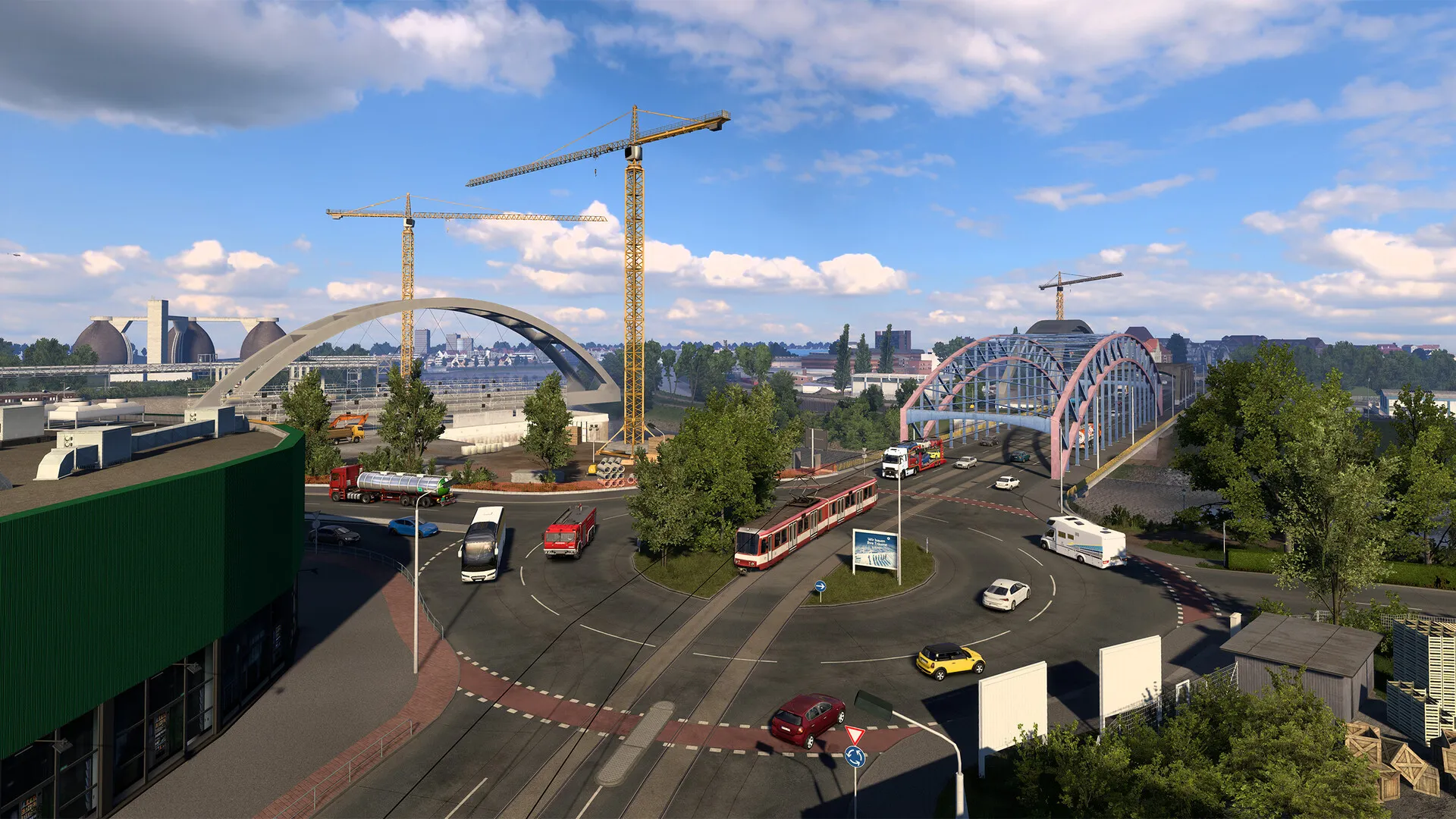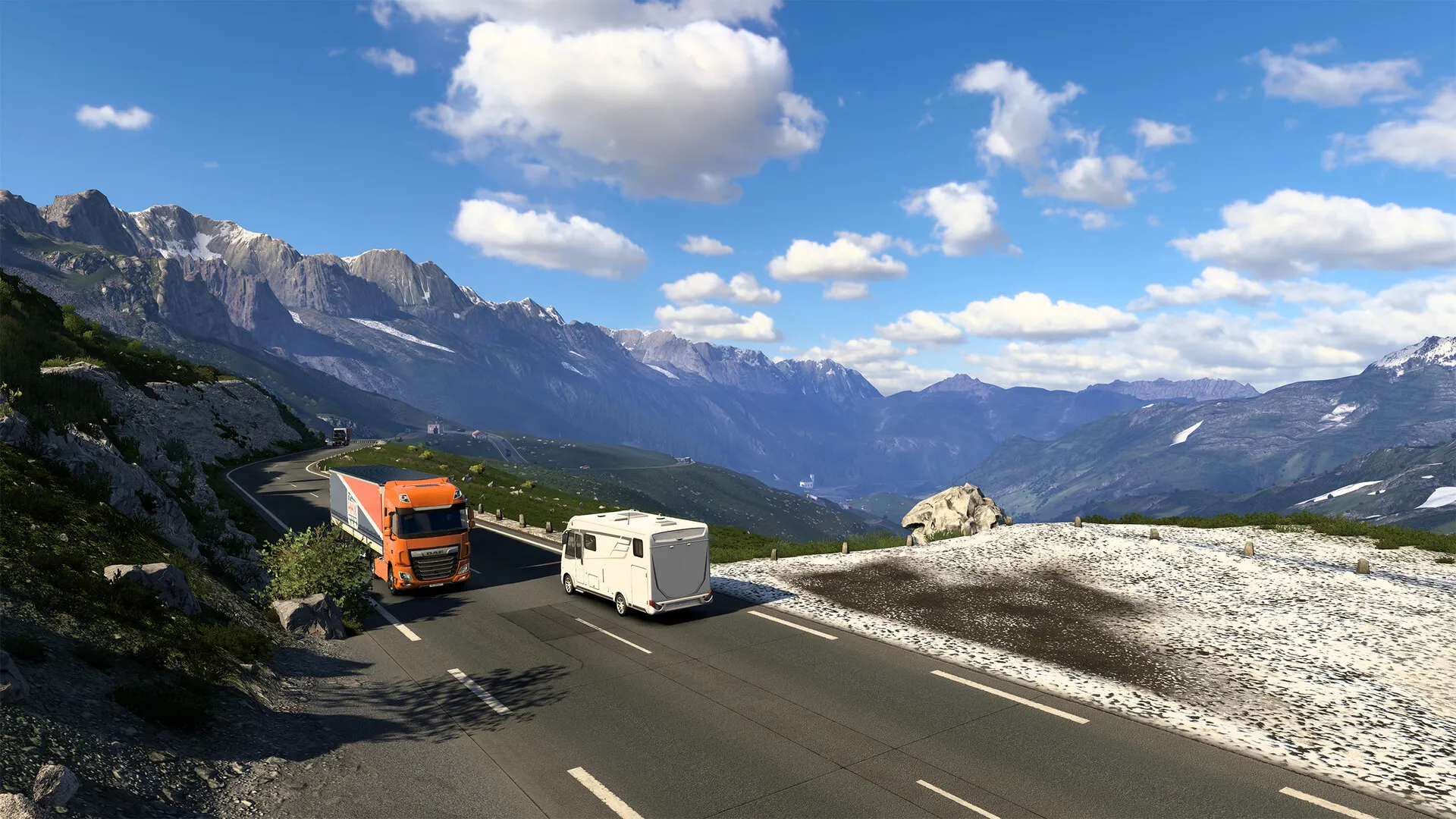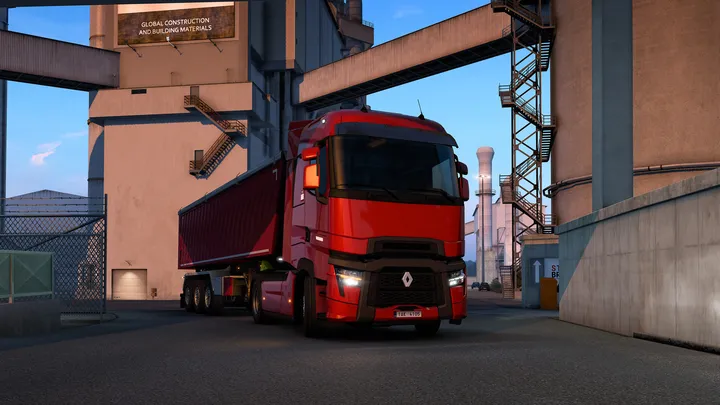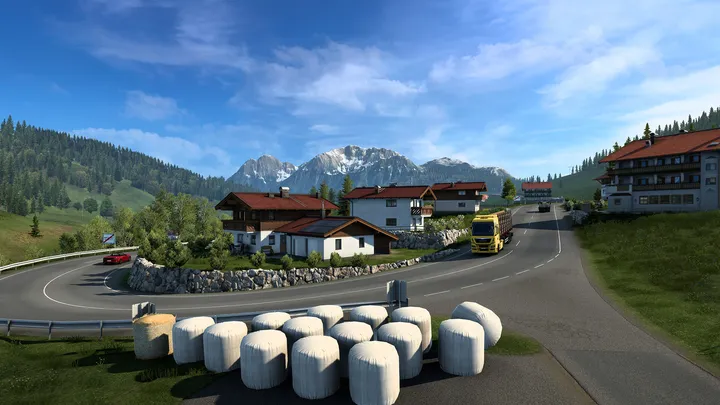Euro Truck Simulator 2 (ETS2) is more than a driving game; it’s a full logistics and trucking simulation across Europe. Players start with a single truck and gradually build a vast trucking empire, delivering cargo, managing routes, and maintaining vehicles. The game demands attention to route planning, cargo management, fuel efficiency, vehicle upgrades, and overall company growth. Mastering ETS2 ensures profitable deliveries, safe driving, and an enjoyable simulation experience. This guide provides comprehensive tips, from beginner strategies to advanced fleet management and endgame optimization.
1. Starting Your Trucking Career
Starting your trucking career in ETS2 requires focus on learning driving mechanics, choosing the right jobs, and understanding the early-game economy. Quick jobs are ideal for beginners since they provide a pre-owned truck and initial earnings without investment risk. Completing these jobs efficiently builds reputation with companies, unlocking better-paying contracts.
Pay attention to city traffic rules, intersections, and speed limits. Avoiding penalties during early deliveries is crucial because fines reduce your already limited profits. Learning mirror usage, camera angles, and turning mechanics is essential for safe driving in urban environments.
Early skill development is important. Investing skill points in long-distance driving and fuel economy will pay off in later hauls. Experiment with routes, traffic patterns, and driving styles during these initial stages to discover the most efficient ways to deliver cargo and maximize early income.

2. Vehicle Selection And Customization
Choosing the right truck significantly impacts efficiency, comfort, and long-term profits. Beginners should start with mid-range trucks that balance engine power, cargo capacity, and fuel efficiency. Premium trucks are available as your finances improve, offering higher speed, better handling, and larger cargo capacity.
Customization enhances both performance and immersion. Engine and transmission upgrades allow you to carry heavier loads and maintain highway speeds. Suspension, tires, and cabin upgrades improve stability, handling, and driving comfort. Interior features like GPS, mirrors, and dashboard displays enhance situational awareness during long hauls.
Exterior customization, while mostly aesthetic, improves your fleet’s visibility and recognition. Choosing upgrades strategically ensures your trucks remain cost-effective while boosting long-haul efficiency. Focus on balancing fuel consumption, engine power, and vehicle durability when planning long-term growth.
3. Route Planning And Navigation
Efficient routing is key to reducing travel time, fuel consumption, and delivery penalties. GPS is helpful, but experienced players learn to anticipate traffic, weather, and terrain challenges. Planning fuel stops in advance prevents costly delays.
Highways provide speed but may include tolls, while city routes offer more frequent deliveries but slower travel. Optimize routes by considering distance, toll costs, and deadlines. Longer hauls require careful fatigue management, with rest stops scheduled to avoid penalties.
Advanced routing involves memorizing shortcuts, scenic paths, and terrain variations. Planning multi-delivery routes reduces total distance while increasing earnings. Being aware of road conditions, inclines, curves, and weather ensures safe driving and timely deliveries.
4. Cargo Management And Delivery Tips
Cargo type affects driving style, skill requirements, and profitability. Fragile cargo requires smooth braking and careful turning, while heavy loads need upgraded engines and stable suspension. Hazardous cargo comes with special regulations to avoid fines and accidents.
Properly securing cargo prevents damage and stabilizes handling, especially during turns or abrupt stops. Weight distribution affects truck performance and safety. High-value contracts should be prioritized for maximum profit, but consider the difficulty of delivery when accepting assignments.
Efficient scheduling can combine short and long hauls in one route, maximizing income while reducing downtime. Timely deliveries improve your reputation, unlocking higher-paying contracts and better job options. Using multiple trailers optimizes payload without overloading a single truck.

5. Fuel Efficiency And Maintenance
Fuel consumption is a major expense. Smooth driving, avoiding sudden acceleration or braking, improves efficiency. Using cruise control on highways maintains steady speeds and saves fuel. Minimizing empty backhauls ensures that every kilometer generates profit.
Maintenance directly impacts truck reliability. Regular garage visits prevent breakdowns and costly delays. Monitor tires, engine condition, and transmission health to minimize repairs. Investing in high-quality parts reduces downtime and repair costs.
Balancing maintenance with delivery income is essential. Neglecting minor repairs can escalate into major breakdowns that disrupt schedules and reduce profitability. Effective fuel and maintenance management directly affect long-term business growth.
6. Economy, Money, And Company Growth
Financial management is crucial for expanding your trucking company. Reinvest profits into trucks, garages, and upgrades. Accept jobs based on profit margins but avoid excessive debt, which can strain cash flow.
Company expansion includes hiring drivers, assigning routes, and managing fleet logistics. Strategically placing garages across Europe reduces travel time and increases efficiency. Upgrading garages with fuel stations, repair shops, and trailer storage improves operations.
Understanding ETS2’s economic system allows strategic decisions. Some cities offer high-paying contracts, while others have lower maintenance costs. Balancing these elements ensures steady company growth without overextending resources.
7. Skills, Levels, And Perks
Skill points earned through driving unlock essential perks. Long-distance and high-value cargo skills increase profits for extended hauls. Fuel economy skills reduce costs over time, while fragile and hazardous cargo skills allow access to premium contracts.
Eco-driving skills further optimize fuel usage and vehicle longevity. Negotiation skills improve payouts on contracts. Advanced perks unlock unique trailers, truck types, and special delivery options.
Managing the skill tree is vital for maximizing efficiency. Properly chosen skills ensure optimal truck performance, increased earnings, and smoother company growth. Prioritize skills that align with your preferred routes and delivery types.

8. Multiplayer And Convoy Play
ETS2 multiplayer adds realism and social interaction. Driving with friends in convoys requires coordination, communication, and role assignment. Lead drivers set the pace, while others maintain safe distances to avoid collisions.
Convoy members share routes, fuel stops, and delivery planning to improve efficiency. Participating in multiplayer events rewards players with unique items and experiences. Cooperative gameplay allows for shared strategies, joint deliveries, and enhanced fun.
Convoys also improve overall skill by exposing players to varied driving conditions and strategies. Teamwork ensures smoother operations and higher profits for all participants.
9. Weather, Traffic, And Environmental Challenges
Weather and environmental conditions impact truck performance and delivery safety. Rain, snow, and fog reduce visibility and traction, requiring slower speeds and careful maneuvering. Proper use of headlights and wipers is essential.
Traffic patterns vary by city and time of day. Peak traffic hours can cause delays, necessitating alternate routes. AI behavior at intersections, roundabouts, and highways must be anticipated to avoid accidents.
Environmental hazards such as steep hills, sharp curves, and narrow bridges require precision driving. Adapting to these challenges ensures safe deliveries and maintains reputation with companies. Experienced drivers balance speed, efficiency, and safety to maximize profits.
10. Endgame, Fleet Management, And Long-Term Goals
The endgame focuses on managing a multi-truck empire efficiently. Fleet optimization involves assigning routes, upgrading garages, and maximizing delivery profits. Hiring skilled drivers ensures consistent performance across the company.
Long-term objectives include completing international contracts, covering multiple cities, and fully upgrading all trucks. DLC expansions add new maps, trailers, and cargo types, providing additional opportunities for growth.
Balancing risk and reward is critical. High-value contracts may involve challenging deliveries but yield significant profits. Effective resource management, strategic upgrades, and optimized driver assignments ensure long-term success and a dominant European trucking empire.
Conclusion
Euro Truck Simulator 2 is a comprehensive simulation that combines driving, logistics, and business strategy. Mastering routes, cargo management, truck upgrades, fuel efficiency, and fleet operations ensures profitable and efficient deliveries. By following the strategies outlined in this guide, players can create a thriving trucking business, dominate European highways, and enjoy immersive long-haul adventures. ETS2 rewards planning, skill, and patience, offering both challenge and relaxation for simulation enthusiasts.

















